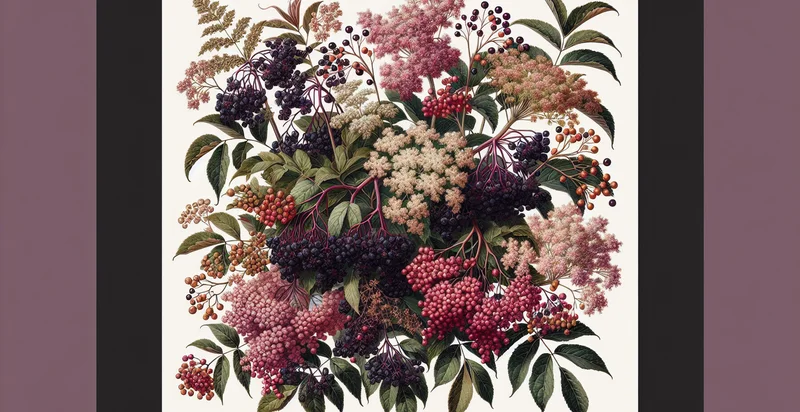Identify elderberry species
using AI
Below is a free classifier to identify elderberry species. Just upload your image, and our AI will predict what species of elderberry it is - in just seconds.

Contact us for API access
Or, use Nyckel to build highly-accurate custom classifiers in just minutes. No PhD required.
Get started
import nyckel
credentials = nyckel.Credentials("YOUR_CLIENT_ID", "YOUR_CLIENT_SECRET")
nyckel.invoke("elderberry-species", "your_image_url", credentials)
fetch('https://www.nyckel.com/v1/functions/elderberry-species/invoke', {
method: 'POST',
headers: {
'Authorization': 'Bearer ' + 'YOUR_BEARER_TOKEN',
'Content-Type': 'application/json',
},
body: JSON.stringify(
{"data": "your_image_url"}
)
})
.then(response => response.json())
.then(data => console.log(data));
curl -X POST \
-H "Content-Type: application/json" \
-H "Authorization: Bearer YOUR_BEARER_TOKEN" \
-d '{"data": "your_image_url"}' \
https://www.nyckel.com/v1/functions/elderberry-species/invoke
How this classifier works
To start, upload your image. Our AI tool will then predict what species of elderberry it is.
This pretrained image model uses a Nyckel-created dataset and has 10 labels, including Sambucus Adoxaceae, Sambucus Canadensis, Sambucus Cerulea, Sambucus Ebulus, Sambucus Javanica, Sambucus Microbotrys, Sambucus Nigra, Sambucus Nigra Subsp Canadensis, Sambucus Nigra Subsp Laciniata and Sambucus Racemosa.
We'll also show a confidence score (the higher the number, the more confident the AI model is around what species of elderberry it is).
Whether you're just curious or building elderberry species detection into your application, we hope our classifier proves helpful.
Related Classifiers
Need to identify elderberry species at scale?
Get API or Zapier access to this classifier for free. It's perfect for:
- Agricultural Monitoring: The 'elderberry species' identifier can be utilized by farmers to monitor elderberry crops and quickly identify species, aiding in effective cultivation practices. By ensuring that the right species is being planted and maintained, farmers can optimize yield and reduce losses related to misidentification.
- Ecological Research: Researchers studying ecosystems can employ the identifier to classify elderberry species in various habitats. This information can help in understanding species distribution and the ecological roles of elderberries in different environments.
- Conservation Efforts: Conservation organizations can use the identifier to track rare or endangered elderberry species. By identifying these species accurately, organizations can implement targeted conservation strategies and monitor biodiversity effectively.
- Nutraceutical Development: Companies developing health supplements can leverage the identifier to ensure the accurate sourcing of elderberry species known for their health benefits. This ensures the efficacy of products and builds consumer trust in derived wellness products.
- Botanical Education: Educational institutions can integrate the identifier into botanical training programs, providing students with a tool for learning species identification. This practical application enhances the curriculum and prepares students for real-world challenges in botany.
- Pharmaceutical Research: Researchers in the pharmaceutical field can utilize the identifier to explore the medicinal properties of specific elderberry species. Accurate classification can lead to new discoveries in natural medicine and improved treatment options for various ailments.
- E-Commerce Plant Retail: Online plant retailers can implement the identifier to guide customers in selecting the correct elderberry species for their gardening needs. This tool can enhance user experience and reduce returns due to misidentified plants, ultimately driving sales and customer satisfaction.


